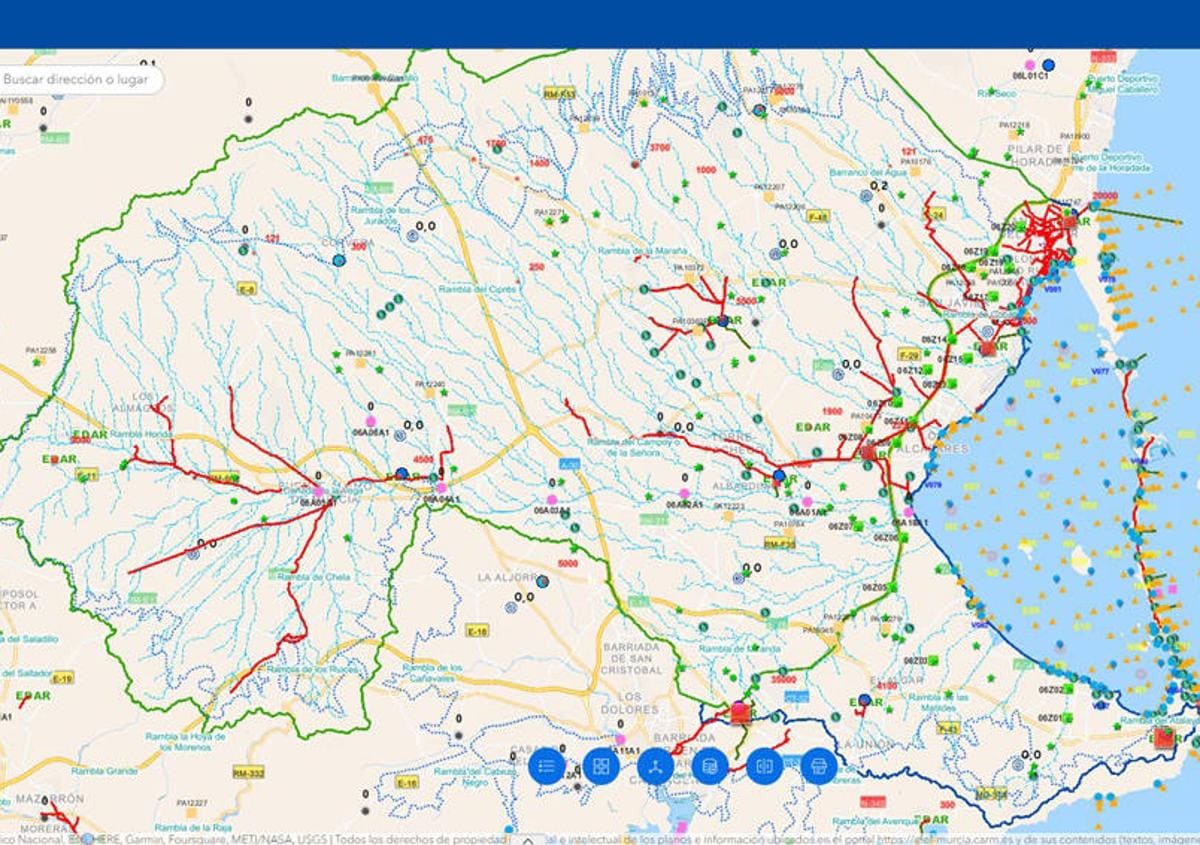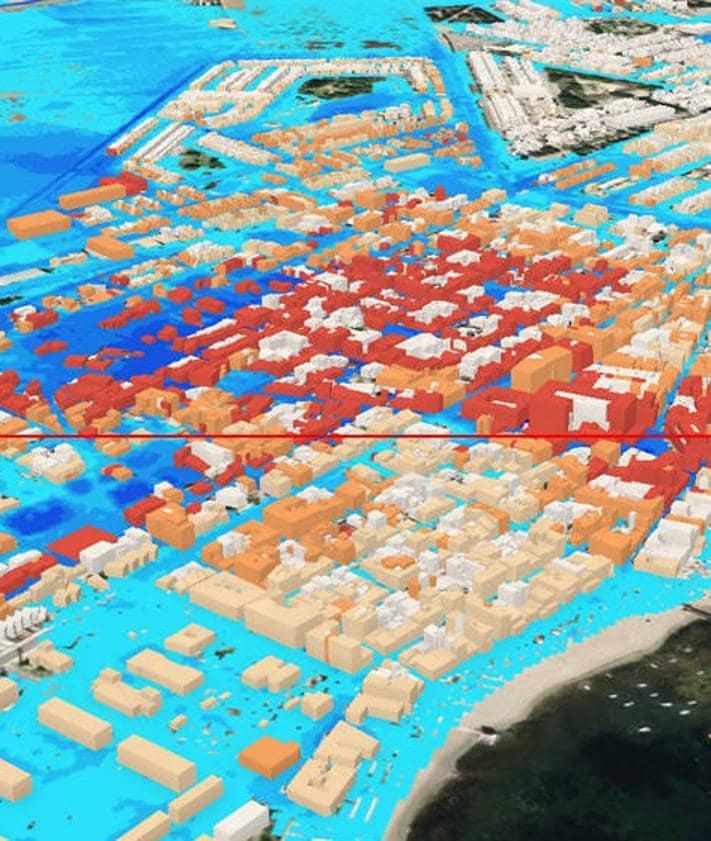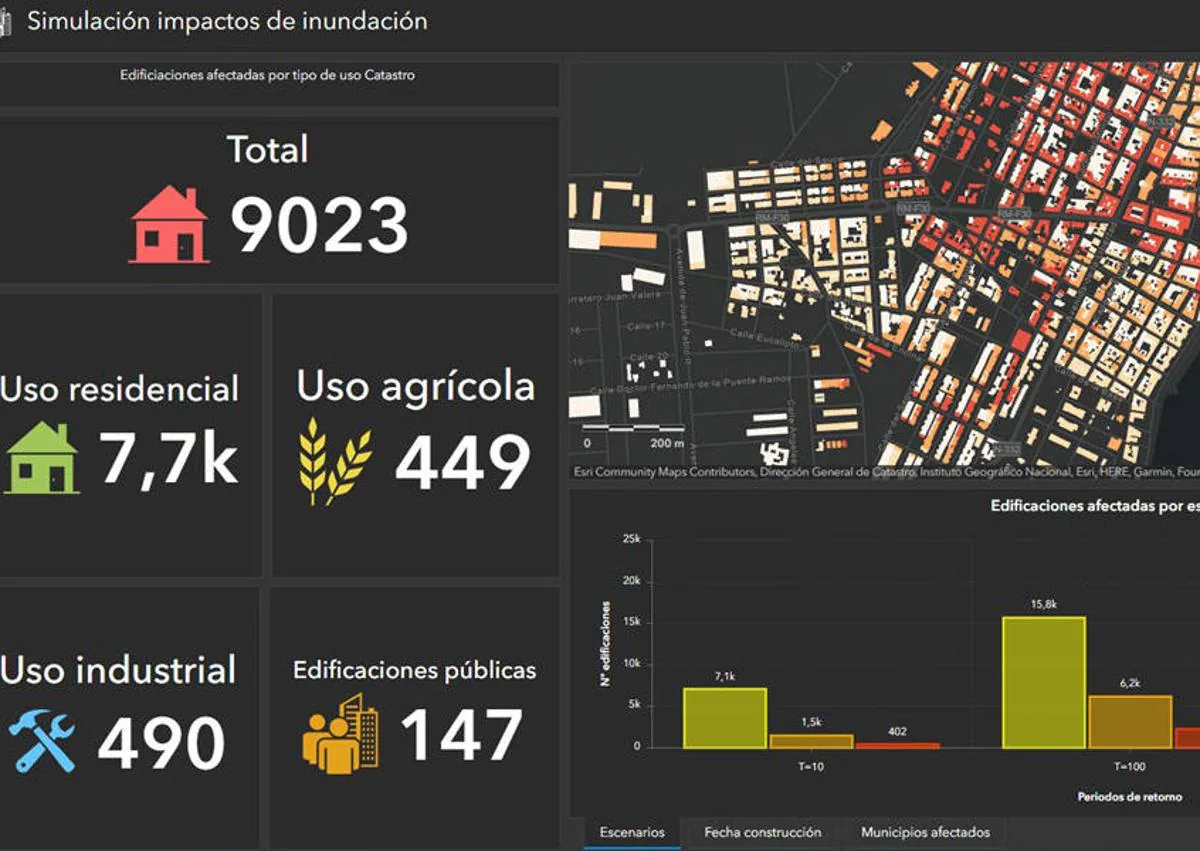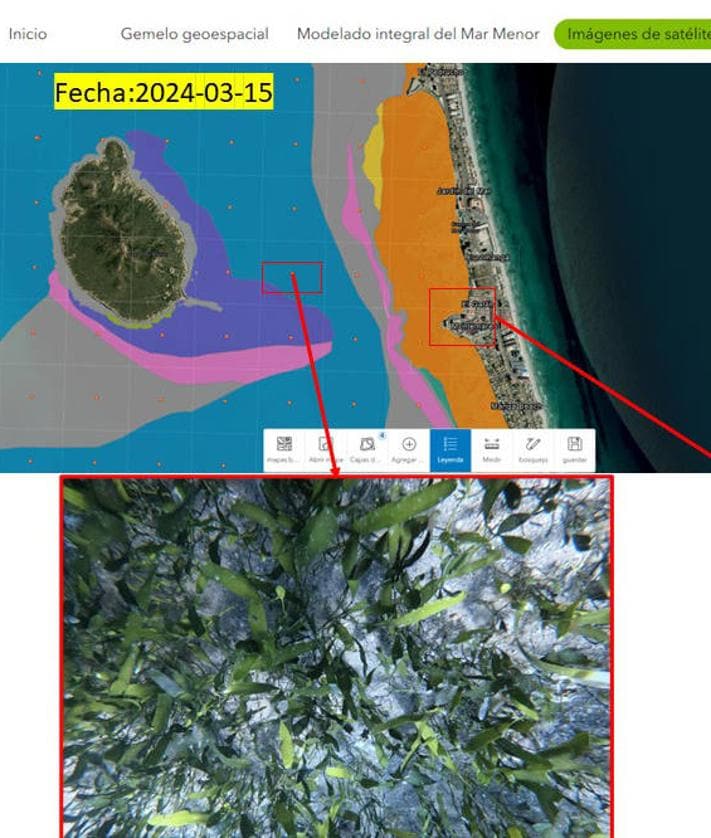The 'digital twin' of the Mar Menor, developed by Imida as a large monitoring and modeling platform for the lagoon and Campo de Cartagena, is ready to begin to show its potential to show the most current state of the lagoon ecosystem and its environment , the evolution of the parameters and predictions in the event of possible episodes of pollution and flooding. The ravages of major adverse natural phenomena cannot be avoided, but we can be better prepared to face them and to undertake actions in advance to mitigate the damage to the population and ecosystem of the Mar Menor.
The Minister of the Environment, Universities, Research and Mar Menor, Juan María Vázquez, who presented this Monday the progress of this tool, defined it as an “alert system” that will help make decisions with the help of artificial intelligence, both punctually in the face of adverse situations, such as to evaluate in the medium term how the works and actions carried out by the administrations are working. For example, in the great DANA of 2019, perhaps some species could have been saved, such as nacra populations, if this tool had been available. Or urgent works would have been undertaken in some points to contain the effects of the floods. These are two examples that the counselor gave together with the scientist in charge of the program, Manuel Erena.
Portal of the Mar Menor observatory; new EDA viewer of the lagoon, and 3D viewer of flood simulation scenarios.


3D seabed
The 'digital twin' has been developed and nurtured since 2016 to detect possible conditions that alter the balance of the ecosystem, and already has a base of 20 million data that will be expanded and updated. It has 120 interoperable services in this first phase. The Ministry will have a new boat that will carry out a precise bathymetry of the bottom of the lagoon to know its state and evolution, with a high resolution capacity. A kind of 'street view' of the seabed, explained Manuel Erena.
Universities and research centers will choose their experts
Councilor Juan María Vázquez is in favor of national and foreign universities and research organizations that are part of the new joint scientific committee of the Mar Menor, being the ones to designate their own representatives. In this sense, he specified that the regional government is not going to propose any of the 14 experts. The department is not going to propose any experts who will make up this team. He recalled that the proposal to integrate international scientists came from his department, where those who have worked on the environmental problems presented by coastal lagoons such as the Mar Menor can apply. Vazquez added that they still do not know which technicians he will propose to represent the Community. The Ministry will appoint its own. “Our problem is who we leave out, because many have a high profile,” he said.

The 'digital twin' also identifies land uses and their evolution in Campo de Cartagena, and also offers detailed data, with 3D simulations, of the possible effects and damage of floods in each building. Digital intelligence will play an important role in processing data and establishing models and simulations.
The counselor highlighted that the system will allow the oxygen and chlorophyll levels of the Mar Menor to be predicted a week in advance. The data collected through the Imidase buoy network will be quickly uploaded and processed to feed the platform. This is one of the benefits brought about by the completion of the first phase of the 'digital twin' of the Mar Menor. He highlighted that it is a powerful tool with cutting-edge technology with which the oxygen and chlorophyll levels of the water can be predicted, “which makes it easier to control and quickly act on possible conditions to minimize their impact.”
Dashboard of buildings affected by different flood scenarios and monitoring with satellite images.


He added that in later phases the early detection of other parameters may be incorporated. He highlighted that once the first phase is completed, progress will be made in the implementation of the system that will allow the integration and harmonization of different predictive models developed by international organizations. «This will allow us to know the water flows in the catchment basin and the water inflows that occur from the Quaternary aquifer to the Mar Menor. The modeling system will improve knowledge of how the catchment basin influences the ecological state of the Mar Menor, and the consequences of the influx of fresh water with sediment washout caused by heavy rains, to facilitate decision making,” he added.
The platform will allow us to know the conditions that may affect the Mar Menor and the Quaternary aquifer of the Cartagena countryside during torrential inflows of water in situations such as DANA, soil losses in the catchment basin and the dispersion of sediments or contaminants that could reach the Mar Menor. It will also project other possible consequences such as changes in depth. It includes a high-resolution 3D model of the watershed that incorporates the buildings and terrain orography and tools for the analysis of time series of different parameters, data that has been collected since 2016, such as dissolved oxygen, chlorophyll, salinity, temperature or turbidity.
The Ministry will develop a similar platform that will be “complementary”
The platform that hosts the 'digital twin' will be publicly accessible through the Canal Mar Menor portal, indicated the Ministry. Juan María Vázquez pointed out that in the end there will be a single 'digital twin' powered by the data collected by the regional government and the Ministry for the Ecological Transition, since Teresa Ribera's department has announced that it will also develop a similar tool
The counselor and researcher Manuel Erena highlighted the importance of both systems being “interoperable” and complementing each other. «We treat and process specific data for the objectives that interest us most; We have been working for a long time and we have a data source that they do not have. “The Ministry may be interested in analyzing other parameters, but in the end everything will complement each other.”
For the design and development of the 'digital twin' and for the provision of sensors and new technologies, the regional government, through the Murcian Institute for Agricultural and Environmental Research and Development (Imida), has invested almost 1,230,000 euros so far , of which 840,000 euros are to increase sampling, incorporate state-of-the-art sensors or a data analysis system that uses artificial intelligence to create predictions. Another 200,000 euros have been to buy a boat and 190,000 euros for the manufacture of the 'digital twin' and equipment, says the Ministry.
#39digital #twin39 #begins #function #alert #system #state #Mar #Menor #truth